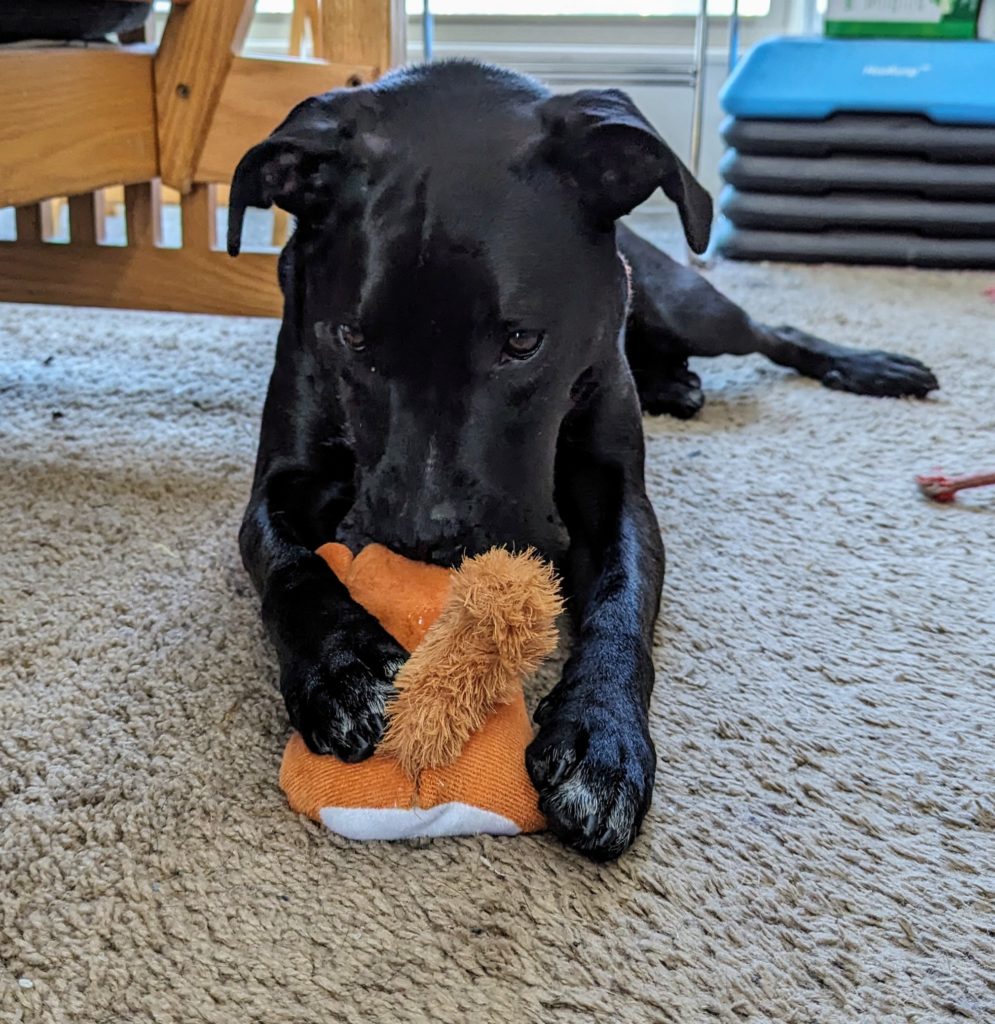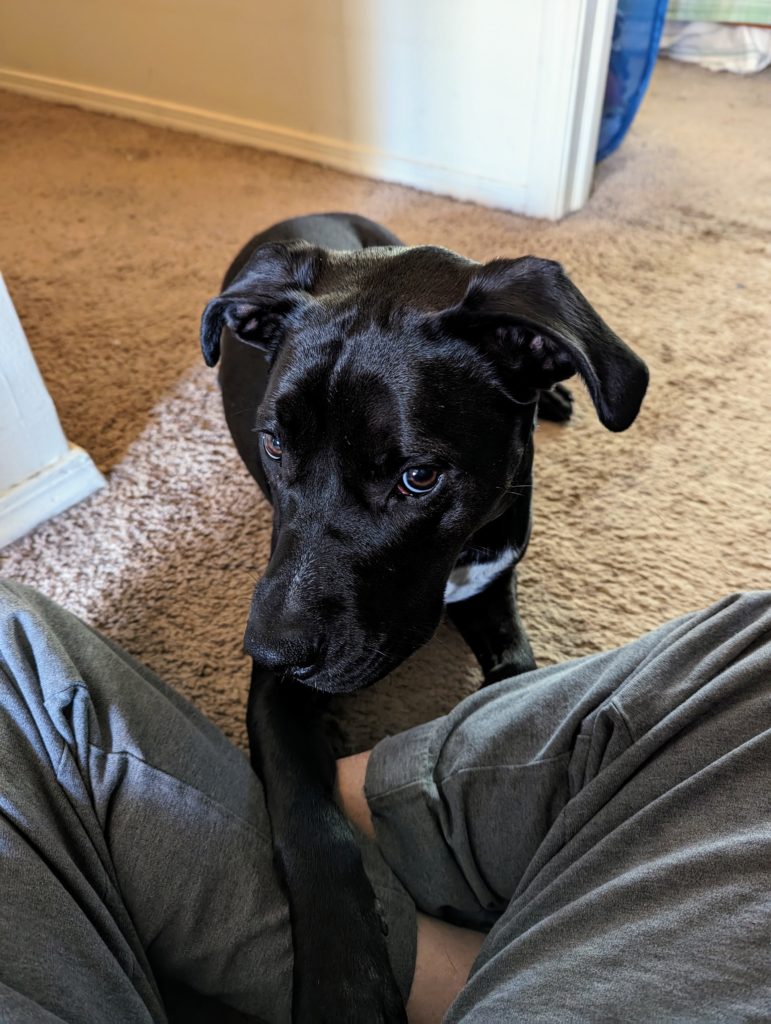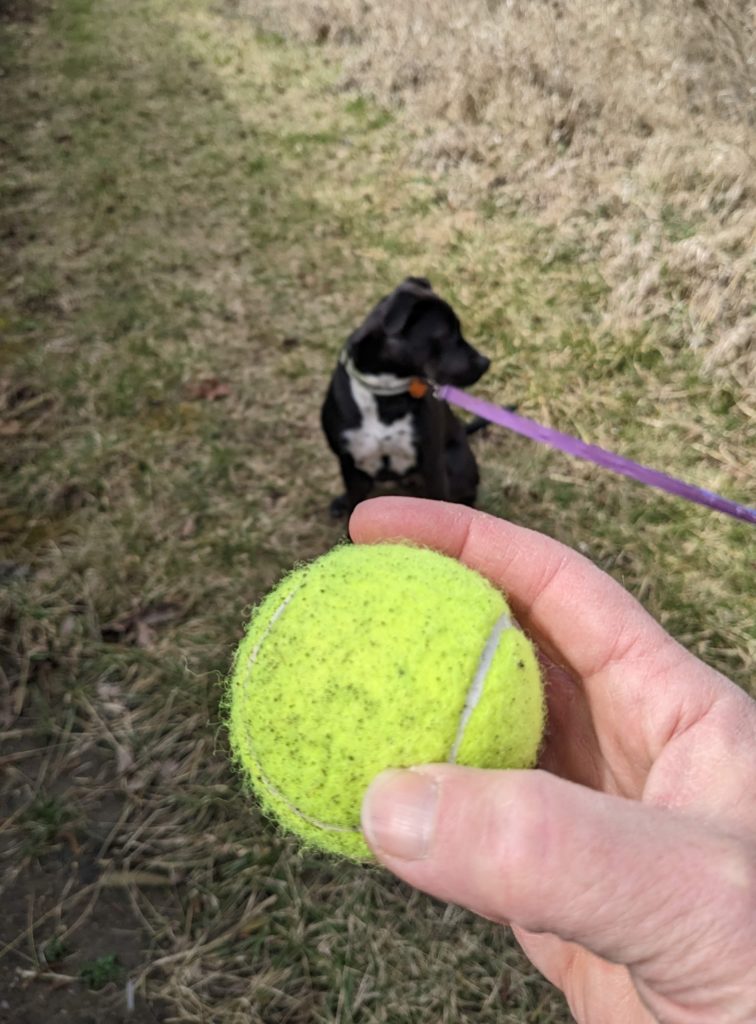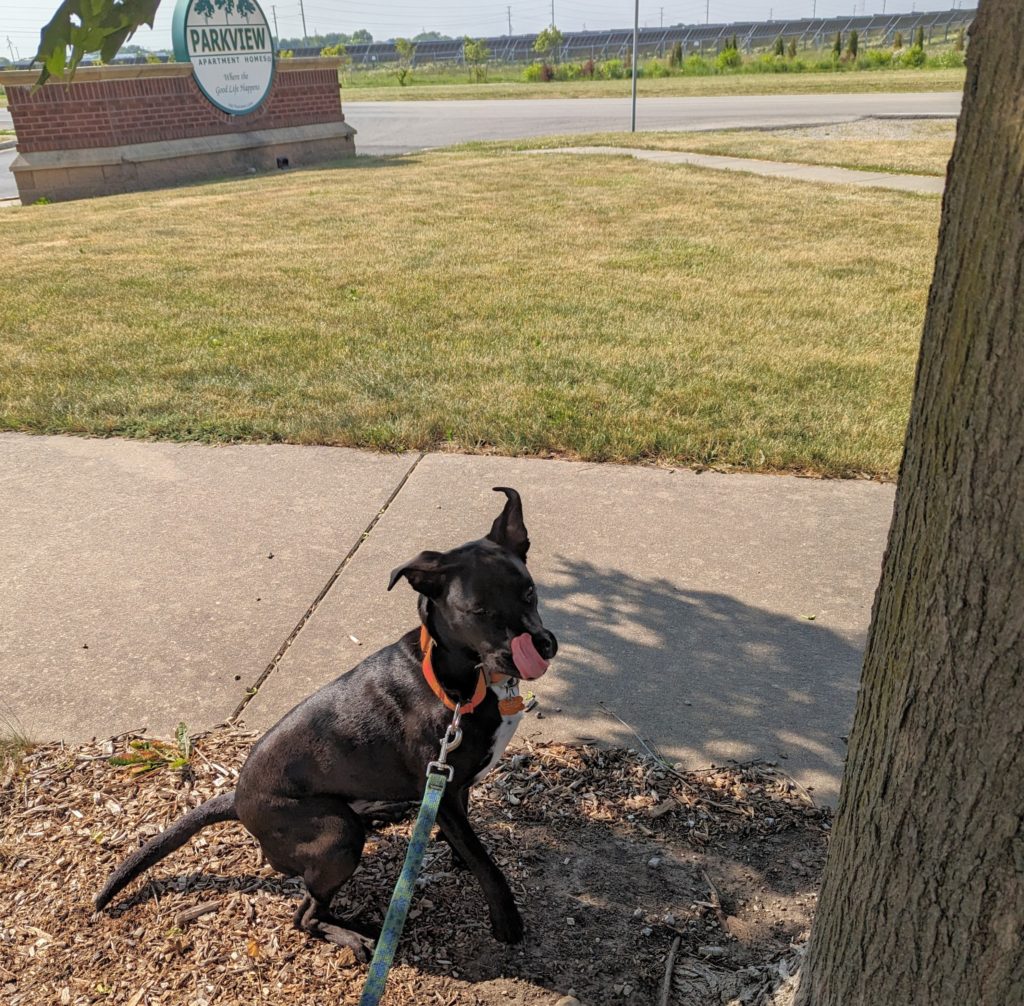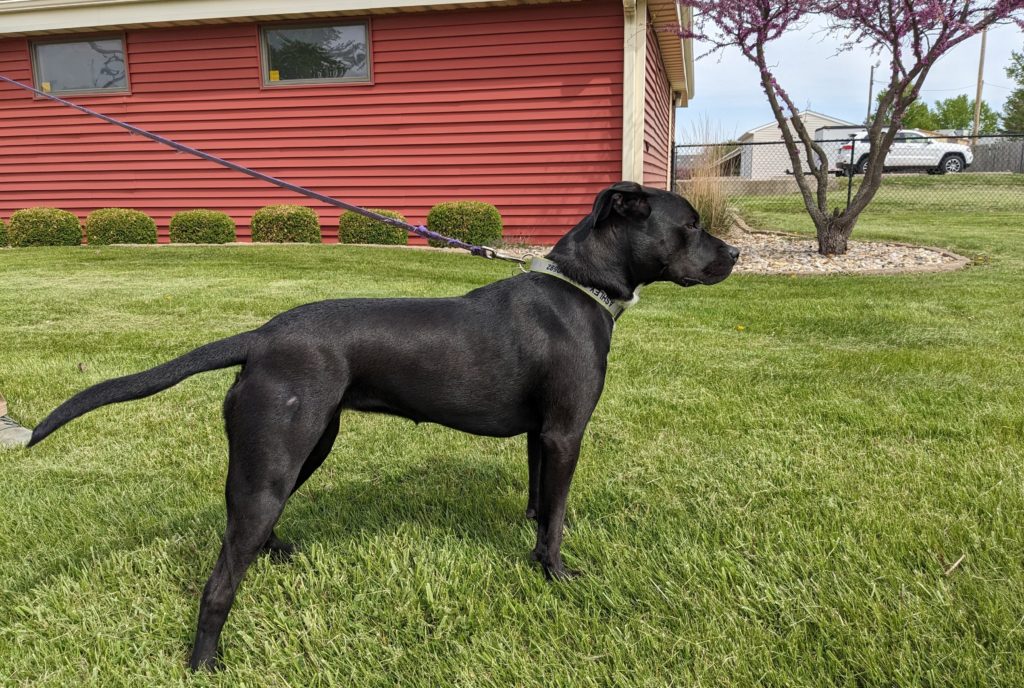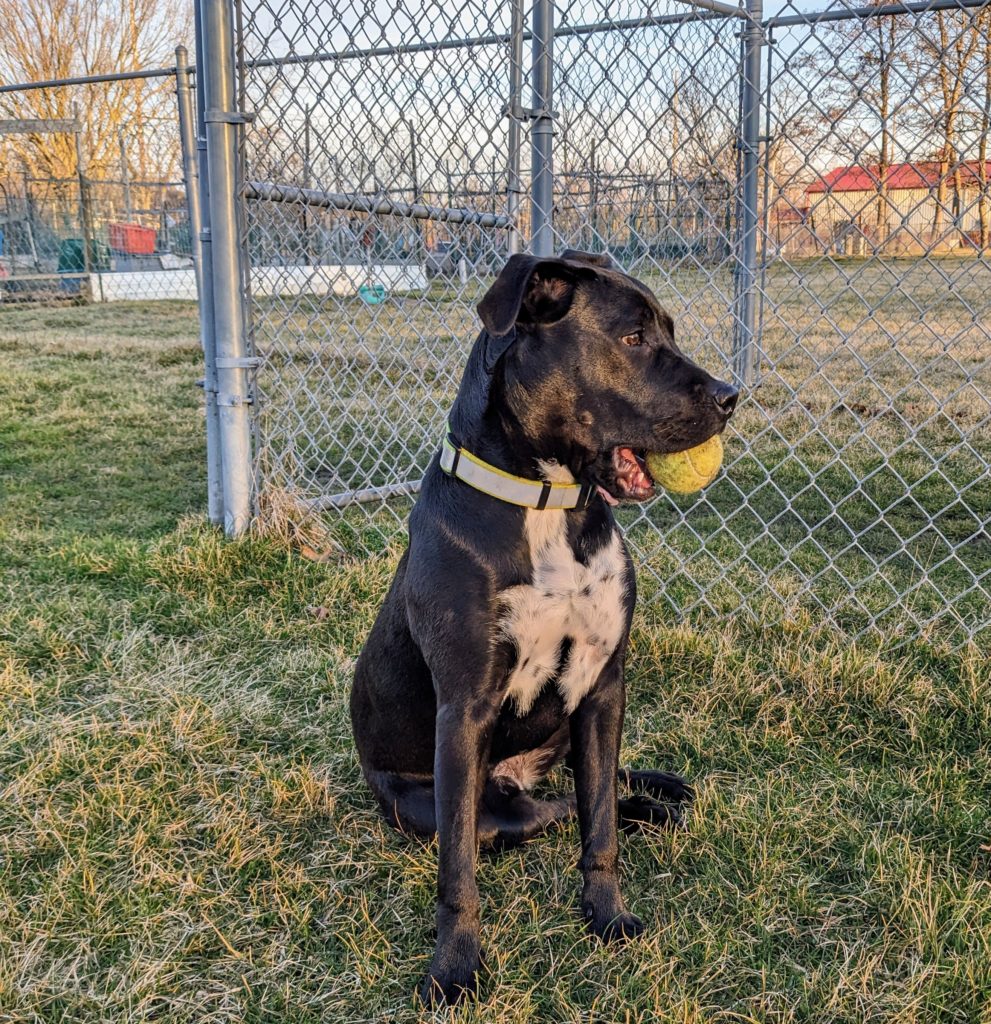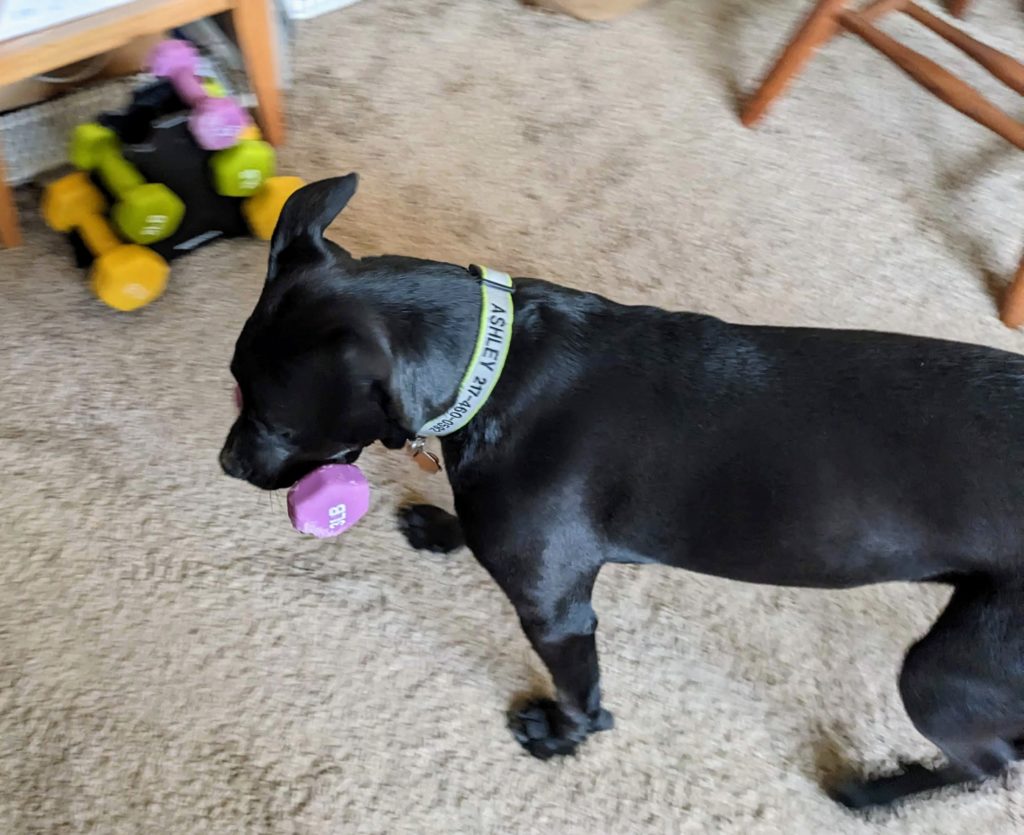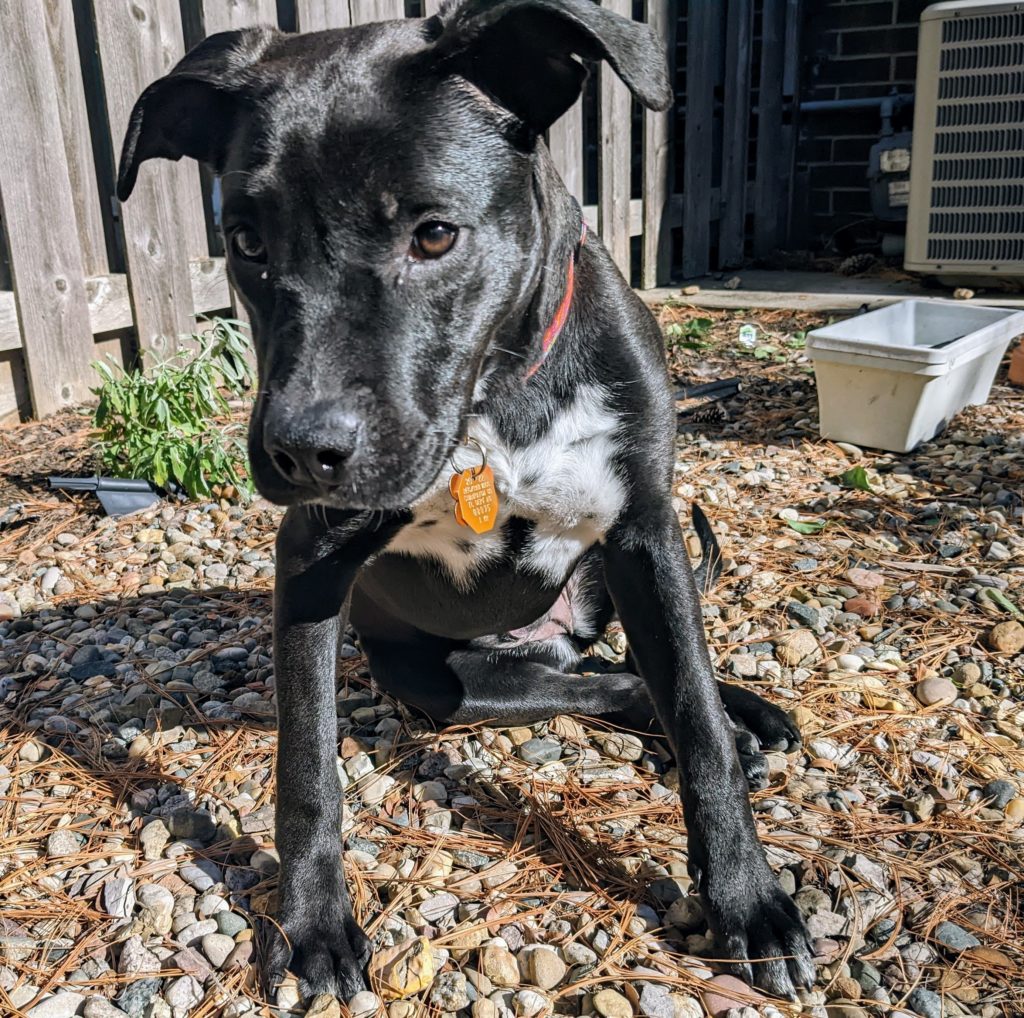The books say not to take your dog running until they’re at least a year (better: 18 months) old, so they’re running on mature bones and joints.
Early on, I instead let Ashley take me on runs, letting her drag me on the leash while she sprinted off in random directions at breakneck speed for 30 or 40 seconds, only to cut in front of me and then come to an abrupt stop. It wasn’t really satisfactory. After I fell and badly split the skin on my knee, I mostly quit doing that. If I wanted to go for a run, I’d leave the dog behind with Jackie and run by myself. But that was unhandy for all of us.
Now that it’s spring, and we’re getting some nice running weather, I thought I’d see if Ashley could run with me.
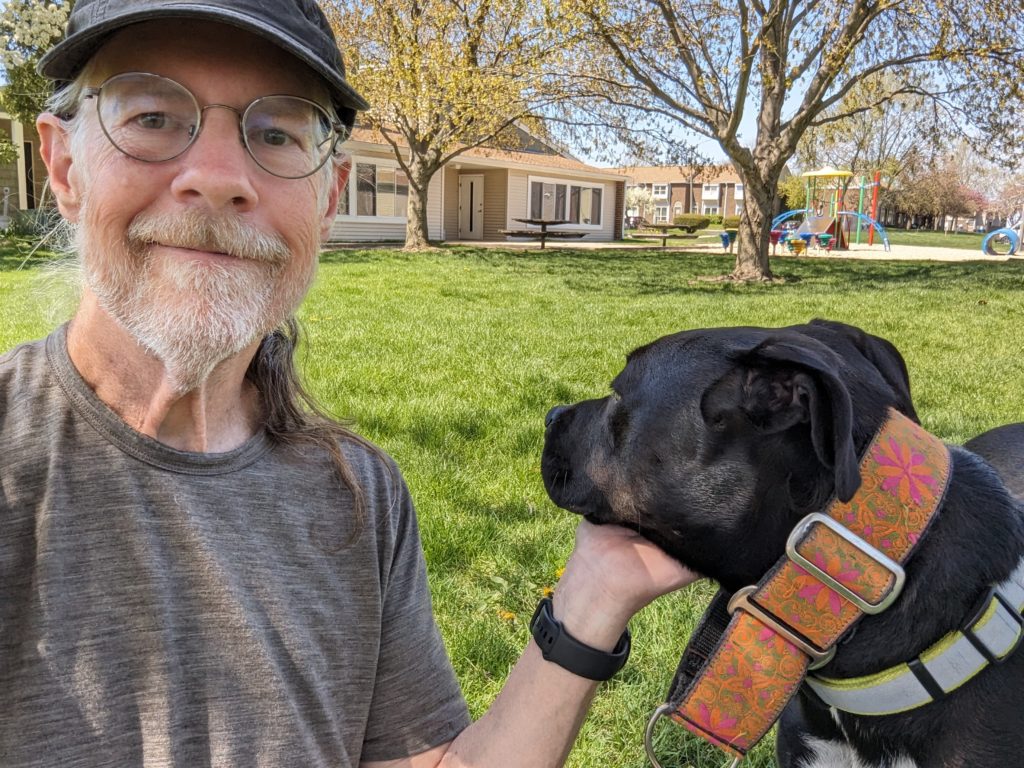
I’d done some preparation: In the winter I took a “loose-leash” walking class, and she’d gotten a lot better at walking with me. For loose-leash walking I wrap the leash around her chest and then back through that loop you can see on the collar in the picture. That has a couple of positive effects: the leash is effectively shorter, and when she does pull, the friction from the leash constricting around her chest makes the pull gradual, rather than an abrupt hard yank. The key, though, is that it serves as a signal that I want her to walk like a pet, and stay by my side, and she’s gotten pretty good at doing so.
Yesterday I thought we’d give running together a try, and it worked great! I walked her a few blocks on a long leash, so she could get her sniffies in. Then, once we reached a multi-use path that’s about a quarter mile away, I put her on the leash wrap, and started running—and she did just what I wanted her to! She ran along, next to me, at my pace. She didn’t try to run off in some other direction. She didn’t try to sprint ahead. She didn’t lag behind like she didn’t want to run. She just loped along next to me.
It was great!
I had neglected to bring water for her, so I was a little worried that she’d overheat, but she seemed to do okay. We ran a mile, then turned around and walked partway home, but when it seemed that she wasn’t overheated, I picked up the pace again and we ran the rest of the way back to our starting point, then I put her back on a loose leash and we walked home (where she did proceed to drink a whole bowl of water).
For future runs I will bring water. I’ll also make a point of getting out early, before the weather gets hot.
If this doesn’t turn out to be a one-off thing, and she’s willing to run with me on a routine basis, I’ll start taking her running every other day, sticking to short runs for a while to make sure we don’t over do it, then gradually increase the distance until one or the other of us hits some limit or another. (I’ve been routinely walking her over 6 miles nearly every day, so we’re both already in pretty good shape.)

